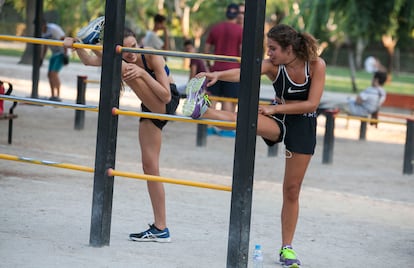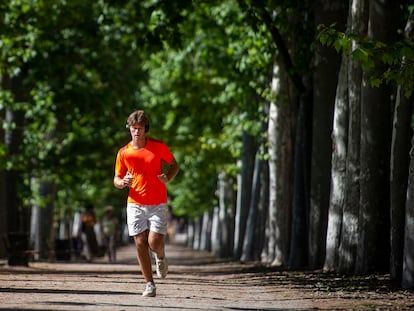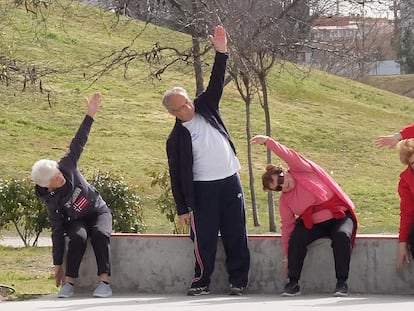No pain, no gain; it’s better to work out in the morning and other exercise myths
Some of popular culture’s most ingrained ideas about physical activity don’t have a scientific basis

Throughout our lives we hear about different ideas and activities that are sometimes biased. Many people repeat such statements, despite the fact that the information hasn’t been verified and is rooted in popular culture (the ad populum fallacy). Such misinformation clearly occurs with respect to physical exercise and sports when so-called celebrity trainers (actors, presenters, etc.) and others who lack the necessary training in exercise sciences, insist on the benefits of one training method or another without a scientific basis (ad verecundiam fallacy). These situations cause some people to doubt myths and false beliefs about physical exercise, which can compromise their health when they exercise without adequate knowledge or supervision. Below are some of the most common myths about exercise.
All sports are good for all people
From the perspective of exercise, participation in any sport is advantageous for its social and psychological benefits. However, not all sports or types of exercise are suitable for the general population. Factors like volume, frequency and intensity of effort, as well as a movement’s physical requirements, must be evaluated. Some exercises may be appropriate for some people but not others. Yes, it is important to move, but exercise should always be based on a person’s individual characteristics, and the activities should be prescribed by professionals.
It’s enough to only exercise during the weekend
Scientific evidence shows that exercising once or twice a week is better for one’s health than doing nothing. However, just training for two days on the weekend isn’t the same as doing more progressive and systematic resistance training. Scheduled exercise yields greater benefits than just doing it during one’s free time. Nevertheless, physical activity over the weekend can offer psychological and emotional benefits when one arrives at work on Monday.
You can only get in shape at the gym
This statement is erroneous. Physical exercise can be performed in different places and environments; for example, calisthenics is performed outdoors and there are other exercises that can be done in the water or in nature. Gyms do offer a space with access to equipment, supervision when doing exercise, and greater control of a systematic training routine. In addition, there can be a greater perception of productivity at the gym.
Walking doesn’t count as exercise
Walking counts as moderate physical activity when its duration and intensity is modified appropriately (when done for 30 to 45 minutes, 3 to 4 times a week); as athletes who walk demonstrate, it can even be a vigorous activity for scheduled training. Scientific evidence corroborates that walking is beneficial for physical, mental and emotional health, and it is especially good for the adult population. It is also a beneficial activity for people who have chronic diseases and cannot run or do high-intensity exercises. So, yes, walking counts as exercise.
Morning is the best time to exercise
According to a recent meta-analysis, scientific studies have not reached a clear conclusion on the time of day when strength or resistance training is best for the body. They explain that, when a training time is chosen, it is always used for physical tests or trials, because measurements will be more precise that way. Likewise, circadian rhythms affect mood, perception of effort and anxiety during physical exercise; however, the scientific literature is not definitive on exercise’s psychological benefits at one particular time of day versus another.
Breathing through the nose is better than breathing through the mouth
Scientific studies show that, in aerobic and anaerobic exercise, breathing through the nose is more beneficial from a respiratory and metabolic perspective. However, the person doing the exercise sometimes finds it more comfortable and faster to breathe through the mouth, which makes it more difficult to capture oxygen and facilitate breathing. That’s why using band-aids or nasal dilators during exercise, which promote the respiratory process, is sometimes recommended.
No pain, no gain
Some people believe that if they don’t exercise at maximum intensity, they won’t burn calories or achieve their fitness goals. This belief is not true and can have negative effects on health by causing injuries and making it harder to stick to an exercise plan in the medium and long term. Likewise, there are those who think that the more time spent exercising, the better. That belief is similar to the previous one, which makes some people decide to exercise for a long time, putting stress on the body. Scientific evidence recognizes the psychological and preventive health benefits of 30 minutes of exercise a day. Let’s remember that the World Health Organization’s recommendation is that the adult population should perform moderate to vigorous physical activity for 150 to 300 minutes a week.
Asphalt damages joints
Scientific evidence tells us that running on asphalt causes greater stress on the muscles of the lower body and the ankle joint, so it should be done without muscle fatigue and having prepared beforehand because the surface exerts greater plantar pressure. On sandy roads, the ankle joint requires greater stability to avoid pronation of the joint, while demands on the joints and muscular stress on the lower body are less on beach sand or grass. For that reason, runners should select the surfaces they run on based on their training and fatigue status, because a poor choice can lead to injury.
Using anti-inflammatory drugs to avoid soreness
Studies indicate that continuously using anti-inflammatory drugs reduces exercise’s effects on muscles and recovery, as well as improvements in endurance and strength. Studies are not conclusive about the possible benefit of using them before training or competition. In any case, note that athletes should not use analgesics without medical supervision because it can lead to misuse, which can be harmful to their health.
For all these reasons, one is advised to follow the recommendations of physical exercise specialists (people trained in physical activity and exercise sciences) and health experts to avoid misinformation and to find the types of exercise that are most suitable for them.
Sign up for our weekly newsletter to get more English-language news coverage from EL PAÍS USA Edition
Tu suscripción se está usando en otro dispositivo
¿Quieres añadir otro usuario a tu suscripción?
Si continúas leyendo en este dispositivo, no se podrá leer en el otro.
FlechaTu suscripción se está usando en otro dispositivo y solo puedes acceder a EL PAÍS desde un dispositivo a la vez.
Si quieres compartir tu cuenta, cambia tu suscripción a la modalidad Premium, así podrás añadir otro usuario. Cada uno accederá con su propia cuenta de email, lo que os permitirá personalizar vuestra experiencia en EL PAÍS.
¿Tienes una suscripción de empresa? Accede aquí para contratar más cuentas.
En el caso de no saber quién está usando tu cuenta, te recomendamos cambiar tu contraseña aquí.
Si decides continuar compartiendo tu cuenta, este mensaje se mostrará en tu dispositivo y en el de la otra persona que está usando tu cuenta de forma indefinida, afectando a tu experiencia de lectura. Puedes consultar aquí los términos y condiciones de la suscripción digital.
More information
Archived In
Últimas noticias
Maduro pleads not guilty before the federal court in New York: ‘I am still the president of Venezuela’
A new test can detect Alzheimer’s from a finger prick
UN team enters Sudanese city of El Fasher after paramilitary massacre: ‘It’s like a ghost town’
A recipe for resistance: Indigenous peoples politicize their struggles from the kitchen
Most viewed
- Gilles Lipovetsky: ‘If you want to live better and fall in love, take Prozac, don’t look to philosophy’
- Alain Aspect, Nobel laureate in physics: ‘Einstein was so smart that he would have had to recognize quantum entanglement’
- Alvin Hellerstein, a 92-year-old judge appointed by Bill Clinton, to preside over Maduro’s trial in New York
- Why oil has been at the center of Venezuela-US conflicts for decades
- Maduro’s downfall puts China’s relationship with Venezuela to the test










































